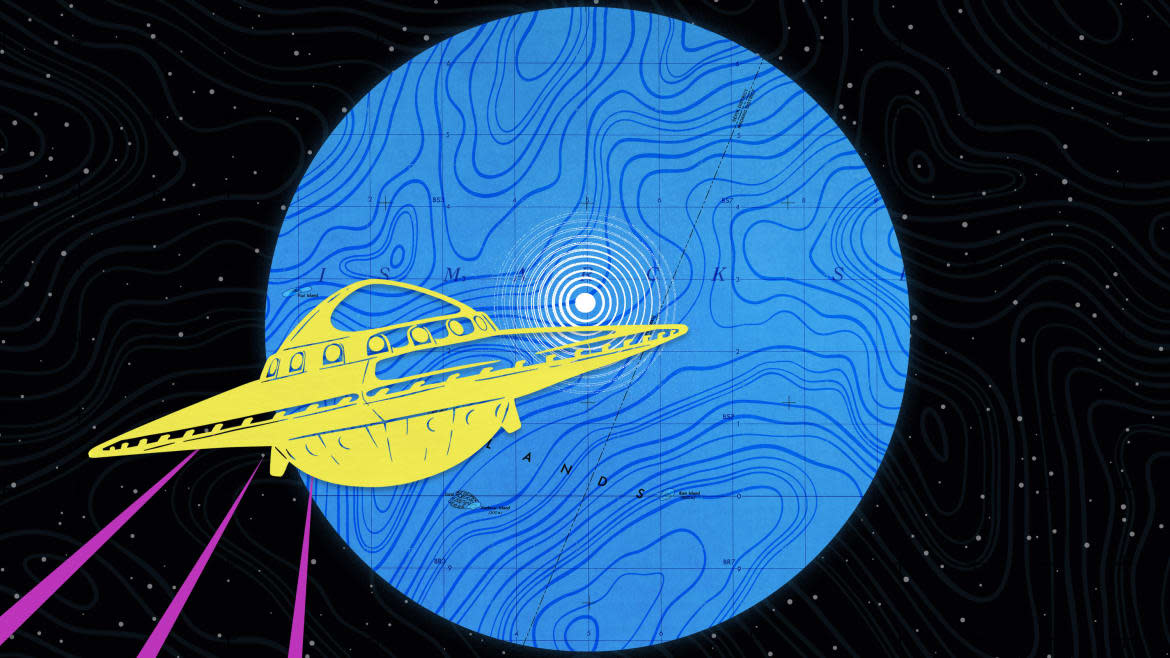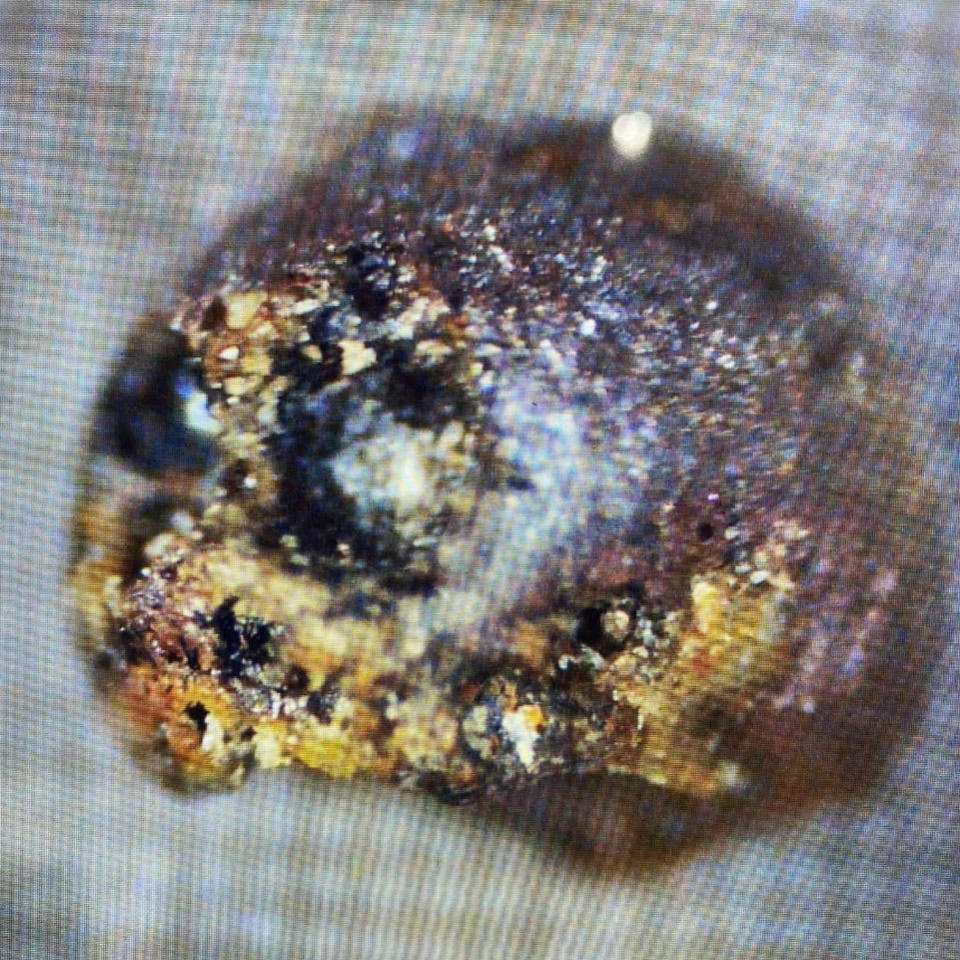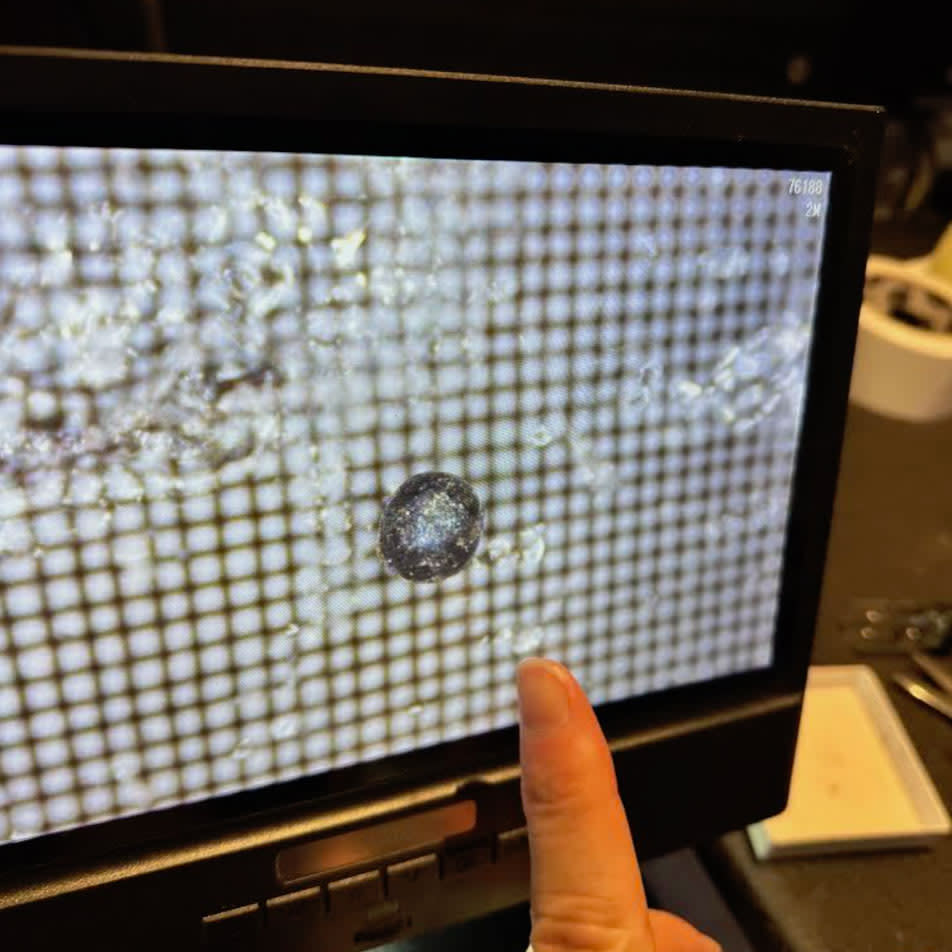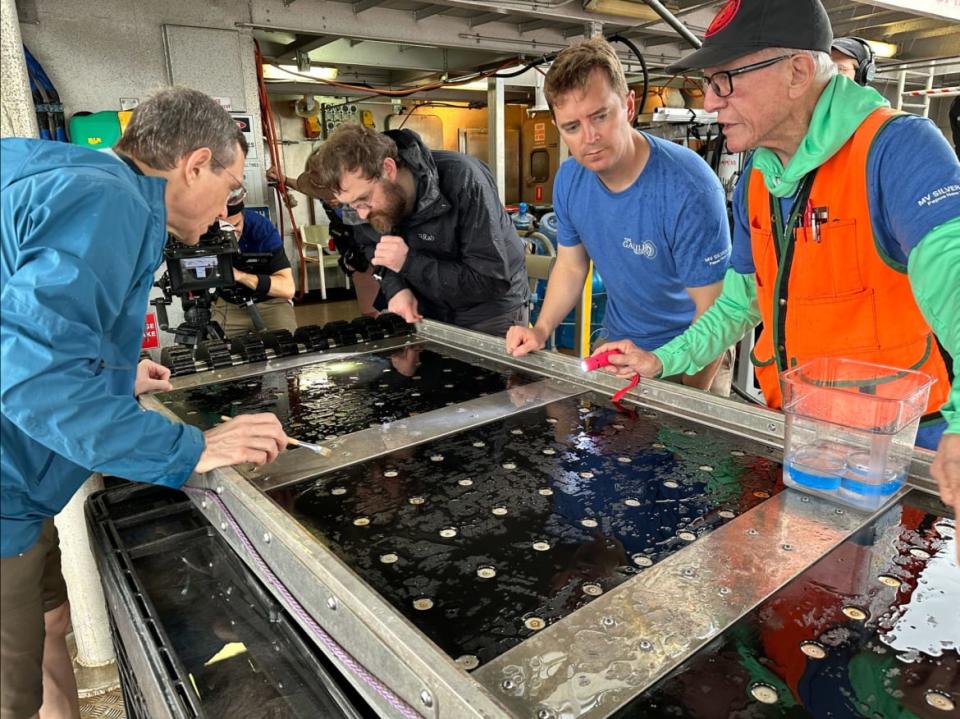A Harvard Physicist Went Fishing for an Alien Probe. What Did He Find?

Harvard physicist Avi Loeb went to Papua New Guinea looking for the remnants of what he believes is a rare meteor—one that may have originated from outside our solar system before crashing into the Pacific Ocean, around 50 miles off the Papua New Guinean coast, in 2014. He had high hopes that it might have carried with it evidence of alien life.
Well, Loeb and his team went diving, and found… something. Fifty weird metal spheres no more than a few millimeters across, sprinkled in the sand on the seafloor. Maybe the “spherules,” as Loeb calls them, are fragments of alien craft—and thus the holy grail of modern astronomy: hard evidence that we’re not alone in the universe.
But at least one critic insists it’s much more likely the tiny metal bits are the very opposite of that. Douglas Vakoch, who heads the METI International research organization in San Francisco that develops attempts to communicate with possible alien civilizations, told The Daily Beast the spherules are more likely to be literal Earth trash—the metallic byproduct of “human-generated pollution.”

Collected from a depth of 1,700 metres (5,500 feet) in the South Pacific, this meteorite fragment may be from outside our solar system.
It could take years of careful analysis before we know with any degree of certainty who’s right. In the meantime, the tiny metal balls are well on their way to becoming ciphers: empty vessels into which anyone can pour whatever meaning they choose. “The most precious metal on Earth,” is how Brian Keating, a cosmologist at the University of California-San Diego, described Loeb’s fragments.
To some, the spherules—composed mostly of iron, but also including some magnesium and titanium—hint at a richer universe that’s teeming with intelligent life. To others, the spherules are the umpteenth reminder that, as far as we know, we’re probably all alone in the vast cosmos.
Merely finding the area where the possible interstellar meteor, CNEOS1 2014-01-08, struck Earth nine years ago was a difficult undertaking. The object was presumably moving fast—up to 37 miles a second—as it neared our planet.
Astronomers generally associate such a high velocity with objects that travel huge distances and potentially cross the unfathomable emptiness between star systems.
To narrow down the object’s impact zone, Loeb needed data from two sets of instruments. The first set was from U.S. military missile-warning satellites that, thanks to their high-tech infrared sensors, tend to also detect meteorites while scanning for rocket launches.
These satellites can not only provide a vague indication of where a meteorite is heading, but they can also capture images of the fireball that results from a meteorite’s superheated trip through Earth’s atmosphere. The timing and intensity of a fireball can tell us a lot about a meteorite’s composition. Basically, the longer it takes for the atmosphere to ignite a meteor, the tougher the meteor is.
After a lot of stubborn wheedling, Loeb convinced the Pentagon to release the full fireball data for CNEOS1 2014-01-08. They indicated the 2014 meteor—if it indeed is a meteor—might be the hardest such object on record. So hard that Loeb is keeping his mind open to the possibility that CNEOS1 2014-01-08 wasn’t really a meteor at all, but a super-tough, long-lasting alien probe that traversed space—potentially for millions or billions of years—before crashing to Earth.
Exploring that far-out explanation first required Loeb to actually pinpoint the meteor’s (or probe’s) crash site. So in addition to U.S. military satellite imagery hinting at the object’s composition, Loeb needed precise telemetry for the thing’s path. He checked earthquake sensors in the South Pacific, and narrowed CNEOS1 2014-01-08’s likely impact zone to a patch of ocean off the coast of Manus Island in Papua New Guinea.
With $1.5 million from entrepreneur Charles Hoskinson, Loeb organized a search party with around 30 members. They traveled to Papua New Guinea and, on June 14, embarked on the research vessel Silver Star for a two-week expedition. Towing a specially designed sled fitted with powerful magnets, Silver Star traveled a 108-mile search pattern—and ultimately dredged up those 50 spherules.

The Interstellar Expedition collected 50 particles from 1,700 metres (5,500 feet). These tiny particles measure just 0.1-1.0mm in diameter, but pave the way for new interstellar discoveries.
“The spherules were mostly found along the expected meteor path,” Loeb’s team stated in a press release. That was an encouraging sign for the team. But critically, it didn’t prove the metal balls were meteor fragments—to say nothing of proving those fragments were manufactured by an intelligent, spacefaring species.
Loeb and his colleagues docked Silver Star and flew back to the United States with the spherules. In a lab at the University of California-Berkeley, Loeb and company inspected a few of the metal balls in an electron microscope, then shaved off fragments of the fragments, vaporized them and analyzed the gasses.
The resulting data led Loeb to conclude the spherules were indeed CNEOS1 2014-01-08’s leftovers. For one, the bits of metal are different in composition than the “control” spherules the research team dredged up from the seabed outside of the suspected meteor impact zone.
Perhaps more compellingly, a quick effort to determine the tiny metal balls’ approximate age indicated at least some of them are around 14 billion years old. That’s as old as the universe itself—and nearly 10 billion years older than Earth.
So it’s possible those spherules really are the remains of CNEOS1 2014-01-08. But the same data that might connect the spherules to the 2014 meteor don’t necessarily say anything about the object’s origin, and whether it’s a hunk of a derelict alien probe… or just a weird rock from deep, deep space. Evidence of construction—say, patterns in the spherules’ internal structures—might point to the former.

A purpose-built magnetic sled has returned from 1,700 metres (5,500 feet) and is inspected by scientists as they remove magnetic particles for detailed examination and further study.
Vakoch urged everyone to calm down and slow down. “We simply don’t have enough data to have any compelling explanation for the fireball tracked by the Department of Defense in early 2014,” he said.
It’s possible that whatever streaked across the sky and impacted the ocean near Papua New Guinea nine years ago wasn’t an interstellar meteor at all, Vakoch said. Maybe it was a fragment of Mercury or Mars, which are known to occasionally spew fast-moving fragments into space following big asteroid impacts.
In any event, it’s also possible Loeb’s spherules didn’t even come from CNEOS1 2014-01-08. Vakoch said he’d expect interstellar objects to have a lot of nickel in them. After all, nickel is a major byproduct of the chemical processes deep inside the cores of many stars.
The absence of significant nickel in Loeb’s millimeter spheres might just mean the spheres are byproducts of industrial pollution.“These spheroids may not even come from space,” Vakoch said.
“Most scientists bend over backwards to avoid claiming that anomalous results are evidence for life beyond Earth,” Vakoch added. “That sense of caution has served scientists well over the centuries, as we have learned that nature is much more creative in generating scientific surprises than we humans could ever hope to be.”
To be clear, Vakoch himself is a strong advocate of a rigorous scientific search for possible alien life. He said he’s just wary of “prematurely leaping to the conclusion that we’ve found alien life.”
On that point, Loeb and Vakoch actually agree in principle. Loeb has said many times he doesn’t necessarily believe in aliens. He believes in the possibility of aliens—and he wants to do the hard work of scrutinizing potential evidence of E.T.’s existence. Sometimes that means organizing a $1.5-million expedition to the possible site of an apparently very rare meteor, and trawling for potential space beads.
Next up for Loeb’s spherules: an exhaustive process of analysis that could lead to formal studies, which in turn could inform efforts by other scientists to interrogate not only the possible fragments of CNEOS1 2014-01-08, but also other potential evidence of alien life.
“This is how science is done,” Loeb said.
Get the Daily Beast's biggest scoops and scandals delivered right to your inbox. Sign up now.
Stay informed and gain unlimited access to the Daily Beast's unmatched reporting. Subscribe now.

 Yahoo News
Yahoo News 
